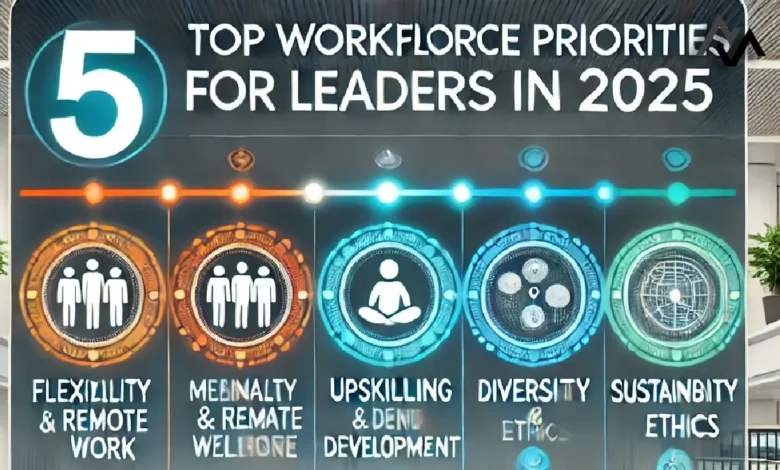Top 5 Workforce Priorities for Leaders in 2025

As we approach 2025, the landscape of work continues to evolve at an unprecedented pace. Leaders must adapt to these changes to ensure their organizations thrive. Here are the top five workforce priorities that leaders should focus on in the coming years.
1. Employee Well-Being
The well-being of employees has transitioned from a mere HR initiative to a critical business strategy. Leaders must recognize that a healthy workforce is a productive workforce. Prioritizing mental health support, flexible working arrangements, and wellness programs can enhance employee satisfaction and retention. By fostering an environment where employees feel valued and supported, organizations can boost morale and performance.
2. Embracing Diversity, Equity, and Inclusion (DEI)
Diversity, equity, and inclusion are not just buzzwords; they are fundamental to building resilient organizations. In 2025, leaders must champion DEI initiatives to create a culture that celebrates varied perspectives. This not only enhances creativity but also improves decision-making processes. Leaders should implement training programs, establish diverse hiring practices, and promote an inclusive workplace to attract top talent and drive innovation.
3. Upskilling and Continuous Learning
The rapid advancement of technology necessitates a workforce that is adaptable and continuously learning. Leaders should prioritize upskilling initiatives to equip employees with the skills needed for future challenges. This includes investing in training programs, mentorship opportunities, and online learning resources. By fostering a culture of continuous development, organizations can ensure their teams remain competitive in a fast-changing market.
4. Enhanced Communication and Collaboration
Effective communication is vital for organizational success. As remote and hybrid work environments become more common, leaders must leverage technology to facilitate seamless communication and collaboration. Tools like project management software, video conferencing, and instant messaging can bridge gaps between teams. Furthermore, establishing regular check-ins and feedback loops can help maintain transparency and foster a sense of community among remote employees.
5. Purpose-Driven Leadership
In an era where employees seek meaning in their work, leaders must embody purpose-driven leadership. This involves aligning organizational goals with societal values and demonstrating a commitment to ethical practices. Leaders who communicate a clear vision and engage employees in meaningful projects foster loyalty and inspire higher levels of performance. By prioritizing a purpose-driven approach, organizations can attract talent that resonates with their mission and values.
Conclusion
As we look ahead to 2025, the role of leaders is more crucial than ever. By prioritizing employee well-being, fostering diversity and inclusion, investing in continuous learning, enhancing communication, and leading with purpose, organizations can create a thriving workplace. These workforce priorities not only improve employee engagement but also drive organizational success in a rapidly changing world.




